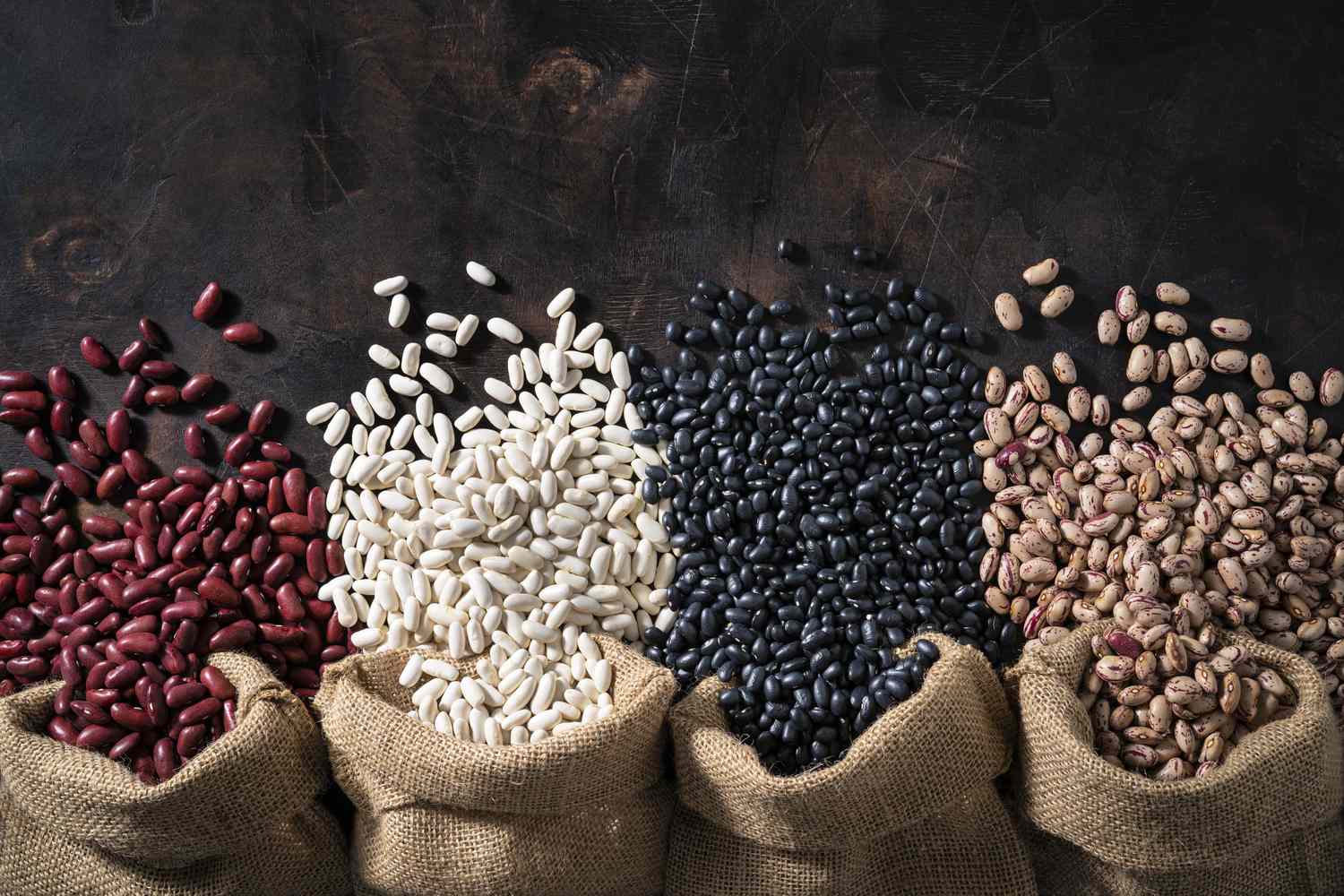Key Takeaways
- Both black beans and pinto beans are nutrient-dense and support overall health. Each provides plant-based protein, fiber, folate, potassium, and antioxidants that can help lower the risk of heart disease, diabetes, and obesity.
- Black beans stand out for their antioxidant and gut health benefits. Their dark pigment is rich in anthocyanins and phenolic compounds that help regulate blood sugar, reduce inflammation, and promote healthy gut bacteria.
- Pinto beans edge ahead in mineral content and heart health support. They contain more potassium, calcium, and folate than black beans, which can help manage blood pressure and protect the heart and kidneys—making both beans valuable for different health goals.
The humble bean is often overlooked as a nutritional powerhouse, and when it comes to picking a bean, it can sometimes feel a bit tricky to select which beans to add to your diet.
“Beans are a highly nutritious addition to any diet,” says Jessica Clancy-Strawn MA, RD. “They are a rich source of vitamins, including vitamin C and seven of the eight B-vitamins—thiamin, riboflavin, niacin, pantothenic acid, pyridoxine, biotin, and folate—with the exception of vitamin B12.”
A can or tetrapack of beans can easily be drained and stirred into soup, used to top salads, added to pasta or veggie dishes, and so much more. Beans’ versatility is their signature, and pinto beans and black beans can be enjoyed together or interchangeably. When it comes to picking which bean to eat, here’s which one is better for your health goals.
- Jessica Clancy-Strawn MA, is a registered dietitian with nearly 20 years of experience based in Houston, Texas
What Are Black Beans?
Black beans’ nutritional content, per 100 g cooked serving (approximately one cup), based on recommended daily allowances (RDA) is as follows:
- Calcium: 27 mg
- Magnesium: 70 mg
- Copper: 0.209 mg
- Manganese: 0.444 mg
- Iron: 2.09 mg
- Zinc: 1.12 mg
- Potassium: 355 mg
- Phosphorus: 140 mg
- Folate: 149 µg
Black beans are legumes that are dark, oval-shaped, and smaller than a typical button. Native to Central America and South America, black beans are often found in Latin cuisine.
“Nutritionally, black beans support lean muscle growth, and [can] help reduce body fat while serving as a reliable energy source,” says Clancy-Strawn. “The protein and resistant starch they contain can improve glucose tolerance, reduce fat production, and lower leptin levels.” This starch can also help promote beneficial gut bacteria and reduce inflammation.
The dark color of black beans is also nutritionally beneficial. “The seed coat of black beans contains phytosterols and phenolic compounds that, along with gut bacteria, help lower cholesterol,” Clancy-Strawn adds. Because the human body doesn’t easily absorb most phytosterols, they’ll remain in your digestive system longer and act as prebiotics.
What Are Pinto Beans?
Pinto beans’ nutritional content, per 100 g cooked serving (approximately one cup), based on recommended daily allowances (RDA) is as follows:
- Calcium: 46 mg
- Magnesium: 50 mg
- Copper: 0.219 mg
- Manganese: 0.453 mg
- Iron: 2.10 mg
- Zinc: 0.98 mg
- Potassium: 436 mg
- Phosphorus: 147 mg
- Folate: 172 µg
Pinto beans are small, tan-hued beans native to Central America, and are typically a bit larger than black beans.
“Pinto beans are rich in phytonutrients and antioxidants, which help protect the body from damage caused by free radicals. Additionally, they contain polypeptides—small chains of amino acids—that can inhibit the activity of α-amylase, an enzyme that breaks down starch into sugar,” Clancy-Strawn explains.
“Pinto beans contain more potassium than black beans, which may help prevent, control, and manage high blood pressure—offering protective benefits for both the heart and kidneys,” she adds.
Pinto beans are also high in the natural proteins hemagglutinins and defensins, which can have anti-fungal, anti-diabetic, and anti-tumor properties.
Which Beans Are Better for You?
Both pinto beans and black beans are full of health benefits, but choosing which is better for you depends on your personal health goals.
“Both black and pinto beans are excellent sources of protein, potassium, folate, fiber, vitamins, and minerals,” says Clancy-Strawn. “They offer significant nutritional benefits as part of a balanced diet, and contribute to the prevention of heart disease, diabetes, obesity, and certain types of cancer.”
If you’re comparing nutrient contents, pinto beans contain higher levels of vitamins and minerals, including calcium, copper, manganese, potassium, phosphorus, and folate. But black beans, due to their dark color, contain more phytochemicals and have greater antioxidant capacity, higher levels of phenolic compounds, and a broader spectrum of polyphenols. “They are high in anthocyanins—a type of antioxidant that helps regulate glucose levels and may reduce the risk of heart disease, among other immune-boosting effects,” adds Clancy-Strawn.
The best bean for you is the bean that best balances your diet, but most importantly, the bean that’s available and enticing to eat in your regular meals or snacks. You could also consume black beans and pinto beans together in an effort to reap the health benefits from both of these healthy foods.
